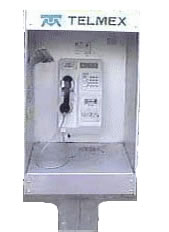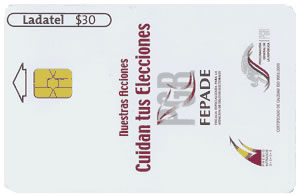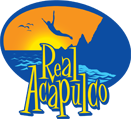Telephones in Mexico

The telephone situation in Mexico can be flabbergasting, even for natives. More accurately, it is especially complicated for residents, as they are the ones who, year-in, year-out, have fed Mexico's massive telephone monopoly, Telmex, a sizable portion of their hard earned wages each month. Mexico's regular telephone service is the de facto private monopoly of one of the world's richest men, Mr. Carlos Slim, who is up there with Warren Buffet and Bill Gates every year as one of Forbes Magazine's richest billionaires.
Telmex was privatized in 1992 under what many suspect were dubious circumstances during the presidency of, Carlos Salinas de Gortarri (who remains to this day Mexico's most disliked person).
Happily, competition has come in via the cellular phone, with several contending providers. The days of the $1,000 USD telephone bill are over. Even TELMEX has come around to offer some attractive plans. Today a person can have telephone service with 2 MB of high speed DSL along with unlimited local and national calls for about $100 USD per month. VOIP services (like Vonage) now offer a Latin American plan with free unlimited calls to various cities in Mexico (including Acapulco) for about $40 USD per month. Cable telephone service is rumored to to be on the way from Cablemás - the main provider of cable television and internet service in Acapulco.
Cell Phones
Cell phones are a great option if you need to communicate while in town. If people in your group want to separate to do different activities, the local cell phone is a more convenient option than buying phone cards and looking for a pay phone. You can buy a "throw away" cell phone for little more than the price of the phone card at local convenience stores (like Oxxo and Extra). You can get a cell with $50 USD worth of credit for about $65 USD. The main advantage of this over the pay phone is that you can give out your number while you're here and can receive local calls, even if you run out of credit. That's the good news. The bad news is that cell phone reception is not always stellar in the more remote sections, like Las Brisas. When you buy air time ("tiempo aire") or its equivalent, the phone card ("tarjeta telefónica"), know that the larger denominations (like $100 and $300 pesos) offer bonus minutes for free. Air time is easy to buy at any of the convenience stores, supermarkets and at Wal-Mart.
Cell brands in Acapulco (past and present) include Telcel, Unifon, Iusacell, and MovieStar. Telcel and MovieStar have the best reception. While Telecel is the most expensive, it is by far the most popular. You can buy a Telcel phone card almost anywhere. Unifon is cheaper, but the range and reception are limited. Iusacell is expensive
and has iffy service. You can get Nextel and iPhone in Acapulco, too.
Land Lines
It's easy to set up a land line in Acapulco if you have lots of time and patience. You just march down to the big Telmex office, take a number and wait a couple of hours. Then a nice lady helps you fill in the blanks, you pay an installation fee, and within four weeks to three months, you will have your Telmex phone. The long delay is no exaggeration; it will take that long to have a line installed. To obtain quicker installation service, drive around until you find a Telmex truck and offer the technician a nice tip to install your phone right away. Generally you can have it done on the spot. This is a very common practice.
Calling Mexico from Abroad
You dial (011 - 52 - area code - number) unless you are calling a cell phone, in which case you dial (011 - 52 - 1 - area code - number).
International Dialing Codes
Thankfully, Mexico deregulated its long distance and international telephone service in 1997, so the best option is to use a discount calling card from your own country. Then circumvent the system entirely by connecting yourself to an international operator. Here's what you would need:
AT&T operator: 001-800-462-4240
Sprint operator: 001-800-877-8000
M.C.I. operator: 001-800-674-7000
Bell Canada: 001-800-010-1990
AT&T Canada: 001-800-123-0201
TELMEX: 01-800-728-4647 (800-SAVINGS)
Dialing Nationally (Inside Mexico)
To dial a national number, start with 01 then the area code and number.
Money Saving Tips
Ask your hotel operator about their fees and rates before placing a call. When walking down the street, never pick up a phone that advertises rapid, direct collect calls to your home country. These are among the biggest rip-offs known to humankind. Even if you are calling a millionaire with an emergency, you should not use these phones, as it just encourages this sort of racket to continue. Call a friend using one of these devices and that friend won't be a friend when the bill arrives. You can easily run up a hundred dollar bill in minutes. Avoid collect calls altogether.
Using a Telmex Payphone

Although there are few coin operated telephones situated around town, to make a call you'll likely need to buy a far less troublesome Ladatel tarjeta telefónica (tahr-HATE-a tehl-eh-FOH-knee-kah), which you can buy almost anywhere. Tarjetas telefónicas (phone cards) come in denominations of 30 pesos, 50 pesos, 100 pesos, 200 pesos, 300 pesos. They used to feature some unique and interesting art, but more recently they figured out that they could sell ads on them so now they're not quite as interesting. If you're going to be talking awhile, go with the largest denomination so that you don't have to try switching cards live because you'll probably hang up on yourself.
RealAcapulco Tip: When choosing a street telephone, try to get one as far away from the traffic as possible. Otherwise, fifty percent of your conversation will be comprised of words and phrases such as: "what", "What was that?" , 'I couldn't hear you" "Could you repeat that?" and "[insert expletive here] bus."
What are all those buttons for?

You'll know that you're going native when you can do one thing… switch phone cards without hanging up on yourself. When you're making a long distance call, being able to switch phone cards and performing other assorted phone-related operations is essential to your ability to manage the already somewhat strained communication situation where your cell probably doesn't work and your hotel phone is too expensive to use. RealAcapulco shows you the ropes here. Despite what the picture above might suggest, it is not really as "easy as 1,2,3..."
- The first button with the picture of a hand changing phone cards is the button you use to change phone cards. The key is to not wait until the card has run out of credit to try it, but to make the switch before you run out.
- The second button, with the picture of a telephone receiver with sound coming out of it and a little arrow pointing up is used for...
- The third button, the one with the picture of the finger pressing the buttons that have the letters "RE," is Redial. Use if you need to dial again the number you had dialed before.
- The fourth button with the two faces that say ABC is the language button. You can press this to change the language displayed in the digital display above.
- The last button, with the telephone, is the button you press to revalidate the telephone card. This is useful because you don't have to hang up, remove the card, re-insert it, and then pick up the receiver again.
